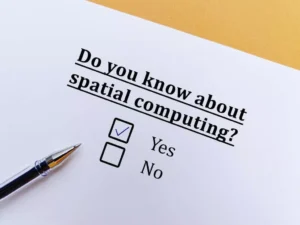SaaS vs PaaS vs IaaS: The difference explained in simple words with examples

If you’re new to the IT industry, you must be overwhelmed by the number of terms used in each sphere. Dealing with it is truly challenging, although nothing is impossible. Even when speaking of things like SaaS vs PaaS vs IaaS, the Global Cloud Team is here to explain.
In this article, you will learn to tell the difference between IaaS and Paas. Also, we shall cover the meaning of each option used for a variety of tasks and provide a few examples for each approach. Read on for more!
What is SaaS?
SaaS, or “Software as a Service,” is the most popular out of all the options that will be mentioned. Most likely, you have already used applications such as Gmail or Dropbox. These are prominent examples of the SaaS model.
Downloading files won’t be required because an application on the SaaS model is hosted online. Just open the website, and the software will be available immediately. It’s a very convenient way to deliver apps with multiple features.

We are confident that we have what it takes to help you get your platform from the idea throughout design and development phases, all the way to successful deployment in a production environment!
Advantages of SaaS
The Software as a Service model’s main benefit is how easy it is applied. All applications are managed on the vendor’s side, meaning users can access them from any device as long as they have a good internet connection.
Of course, we can’t forget about simplified customization. Applying any changes becomes much easier. It’s just a matter of several clicks before a new design feature appears.
Finally, the SaaS model presents maximum payment flexibility. There is no need to purchase complete infrastructure and spend a ton of money on its maintenance. Your cost savings grow immensely – all thanks to the pay-per-use costing model.
What is PaaS?
PaaS, or “Platform as a Service,” is a model that gives teams all the features required for developing a service. With its help, developers from all around the world can create any type of application online. It’s a convenient approach because all information is stored on the internet regardless of one’s location or hardware.
The best part of the PaaS model is the absence of any time-killing tasks. Whenever a developer deploys the software, they don’t have to bother with configuring the hardware details. They deploy, and that’s it.
Advantages of PaaS
Now, pay attention to the advantages in each type because this is where the SaaS vs PaaS vs IaaS differences are most noticeable.
The very first benefit is the fact that your company can avoid spending money on computing. It’s all available within the Platform as a Service model, bringing maximum efficiency for every penny spent.
Second, you gain maximum control over all the features available within the platform. This helps your company select only the stuff you need instead of paying for an all-in-one package. It’s another solution for cost savings.
Finally, you don’t have to worry about upgrading hardware or maintaining it. Your vendor will be responsible for all the related tasks. This helps your team focus on the development process without major distractions.
What is IaaS?
IaaS, or Infrastructure as a Service, is the third type used in this type of computing. Generally speaking, IaaS in cloud computing is the same thing as having in-house infrastructure. It has only one major difference – you access it online, and all the responsibility for maintenance is the vendor’s responsibility.
IaaS services are usually provided on a rent basis. So, instead of breaking the bank to buy a server, you can spend a smaller sum to use it for some time. It is recommended that you calculate whether this is the most profitable option thoroughly.

Advantages of IaaS
The most noticeable benefit of applying the IaaS computing model is the maximum scalability it offers. Since you don’t buy the infrastructure, it is very easy to get more or fewer resources at any time. In addition, you pay only for what is used, so this model won’t make you overpay.
While there is a possibility to have a contract where you’re charged only for the used resources, bigger companies focus on long-term contracts. Therefore, they usually discuss the terms with the vendor to find the most price-friendly balance that could cover the business at any time.
Finally, as renting instead of buying brings some free space in the brand’s budget, new investment possibilities appear. As a result, the company can allocate additional funds for growth and development.
What is better: SaaS, PaaS, or IaaS?
If you are wondering whether any of the above-listed options in this SaaS vs PaaS vs IaaS comparison are better than the other, remember that each computing service model is required in a different development stage. Therefore, it is wrong to say that one of these options is better than the others.
SaaS is used for hosting software, PaaS for its development, and IaaS for renting infrastructure instead of buying it. Each is required during a separate stage, so you could say that they are equal.
Are there any other cloud computing models?
While we have mentioned the main models, there still are several additional ones. These are MBaaS and FaaS. Probably, there are a few others that we have skipped as well. Their specifications will be described in our new blog posts. Follow the Global Cloud Team for more!
The bottom line
We’ve covered all the major differences and pros of SaaS, PaaS, and IaaS. Each option is great during its own stage, so you can’t say that one of them is better.
Now, it is time you found a good provider and started your development process. Contact the Global Cloud Team for more information!
Top Articles
Embracing Automotive Digital Transformation to Accelerate Innovation
I am here to help you!
Explore the possibility to hire a dedicated R&D team that helps your company to scale product development.






